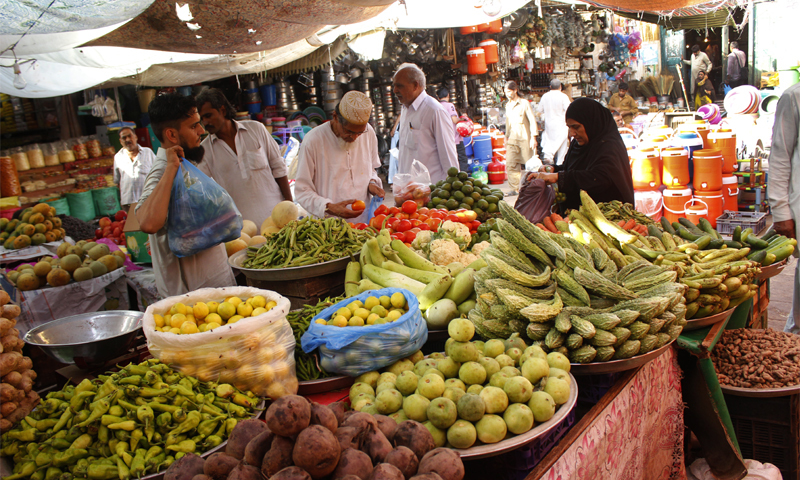In July, the inflation rate dropped to 8.4%, despite double-digit increases in costs of basic kitchen goods, gasoline, and electricity, as well as the possibility of a surge in imported inflation owing to the rupee’s almost Rs10 drop in value versus the US dollar in only two months.
The Consumer Price Index (CPI) increased by 8.4% in July compared to the same month a year earlier, according to the Pakistan Bureau of Statistics (PBS). Despite significant increases in costs of goods that impact every household, it was the lowest inflation rate in nine months.
The national data collection organization recorded a 33% rise in mustard oil costs, a 32.9 percent increase in vegetable ghee prices, and a 31.7 percent increase in cooking oil prices, affecting every family negatively. In July, the PBS recorded a 21.7 percent rise in power costs and a 16.4 percent increase in gasoline prices compared to the same month the previous year.
The increase comes despite the rupee’s worst drop in two months, with the currency closing at Rs163.67 to the dollar on Monday. The rupee was trading at Rs153.36 to the dollar on May 3, a loss of Rs10.31 or 6.7 percent in only two months.
The fall in the value of the rupee will raise the cost of all imported goods, including wheat, sugar, cooking oil, crude oil, and industrial raw materials.
The Wholesale Price Index (WPI), which measures wholesale market prices, increased by 17.3 percent in July compared to the same month a year earlier. In four to six months, retail market prices usually approach wholesale pricing levels, suggesting that prices will stay high in the foreseeable future.
The government has set an average inflation goal of 8.5 percent for the current fiscal year, implying that year-on-year inflation in the fiscal year 2021-22 will likely stay in double digits.
In both urban and rural regions, the total inflation rate has decreased, according to the PBS. In July, the rate of inflation in urban areas stayed at 8.7%, while the rate in rural regions remained at 8%, compared to the same month the previous year.
Food inflation in cities was 9.4%, while it was 7.3 percent in villages and towns, both of which were lower than the previous month. Inflation in non-food items was 8.2 percent in urban regions and 8.7 percent in rural areas.
In July, core inflation, which excludes food and energy, increased to 6.9% in urban areas, according to the national statistics collection agency.
In July, the food category experienced an 8.2 percent rise in prices compared to the same month a year earlier. Prices of non-perishable food products increased by 11.6 percent on an annualized basis within the food category, while prices of perishable goods fell by 9 percent. Housing, water, electricity, gas, and fuel inflation rose to 9.2 percent last month, accounting for one-fourth of the basket’s weight.
Clothing and footwear costs increased by 9.5 percent on average in July. Because of the increasing cost of gasoline, transportation prices increased by 10.5 percent.
According to the PBS, egg prices increased by one-fourth in July, followed by a 23 percent rise in sugar costs and a roughly 15 percent increase in wheat flour prices. Last month, butter and milk costs rose by 13.8 percent.
The majority of the price increases were attributable to changes in taxation policy in the budget, as well as increases in commodity costs on the international market and the rupee’s value.










